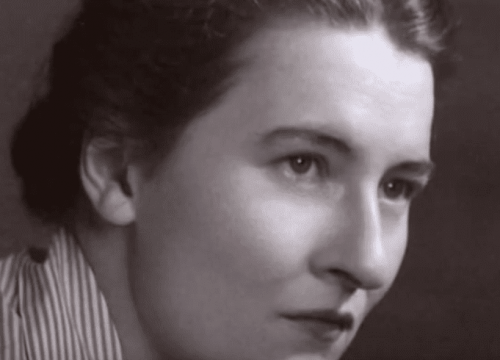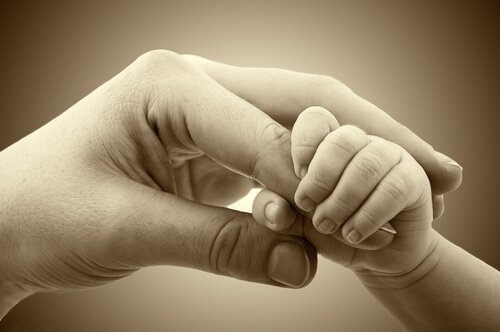The Life of Psychologist Mary Ainsworth

Mary Ainsworth was an American-Canadian psychologist who, along with John Bowlby, developed one of the greatest and most helpful psychological theories on early social development: the attachment theory. At first, they created this theory only considering children. However, in the 60s and 70s, Ainsworth introduced new concepts that led to an expansion focused on adults.
She was one of the most cited psychologists throughout the 20th century. In fact, her brilliant theory is, to this day, the pillar on which numerous researchers and psychologists based their studies. Universities around the world use her work as an example. Additionally, she’s received numerous recognitions despite the fact that she lived in an era in which women were quite restricted in their professional roles.
During her college years, Ainsworth started reflecting on the attached relationship children usually form with their motherly figure.
However, Ainsworth’s life wasn’t all about studies and questions. In fact, it was much more dynamic than we’d expect for a woman of her time. Let’s delve a little deeper into her life.

The life of Mary Ainsworth
Mary Ainsworth was born in the United States. However, her family moved to Toronto, Canada when she was only a little girl. She graduated from Developmental Psychology at the University of Toronto and obtained her Ph.D. in 1939. After finishing her studies, she joined the Canadian Women’s Army Corps and spent four years in the army.
Soon after, she got married and moved to London with her husband. At that time, she started working at the Tavistock Institute of Human Relations along with psychiatrist John Bowlby. The two starting experimenting with separating children from their mothers.
In 1953, she moved to Uganda and started working at the East African Institute of Social Research. There, she continued researching early mother-and-son relationships.
After a while, she obtained a position at the John Hopkins University in the United States. Later, she started working at the University of Virginia, where she kept on developing her attachment theory until her professional retirement in 1984.
“The propensity to make strong emotional bonds to particular individuals is a basic component of human nature.”
-John Bowlby-
Attachment theory
John Bowlby is considered the father of attachment theory. Bowlby’s studies showed that children have innate exploratory behavior. Despite that, if they feel unprotected or in danger, their first reaction is to seek the support of their mother or primary caregiver. Mary Ainsworth added a new concept to this theory: the strange situation.
Mary Ainsworth studied children’s relationship with their caregivers by adding ‘the strange situation’ in several different contexts. ‘The strange situation’ consisted of adding a strange person in the context of mother-and-son relationships.
Based on the results she obtained, Mary Ainsworth expanded the theory by coining three attachment styles: secure attachment, insecure-avoidant attachment, and insecure-ambivalent/resistant attachment. Other researchers then proceeded to expand her theory. The attachment theory we know today is a result of other psychologists’ additions.

Mary Ainsworth and the different attachment types
A fourth type of attachment later made the cut into the attachment theory. However, Mary Ainsworth only defined and characterized these three:
- Secure attachment: When the child feels loved and protected. Even if the caregiver is absent and the child feels certain anguish at the moment they separate, they know for a fact that their caregiver will soon return.
- Insecure-avoidant attachment: When a child responds with intense anguish to the separation of the mother or caregiver. It seems that this type of attachment is the result of poor maternal or primary caregiver availability. Children with this type of attachment learn that their mother won’t always be there when they need it.
- Insecure-ambivalent/resistant attachment: This attachment type develops when the primary caregiver fails to meet the child’s needs in a consistent manner. These children develop a great feeling of distrust and learn not to seek help in the future.
Her outstanding work
Mary Ainsworth became very aware of the importance of developing a healthy relationship with the maternal figure. She thought that this was important because it could influence the child in the future.
She was in favor of programs that would help women work and be mothers at the same time. Honestly, at that time, it was almost impossible for women to do this. However, nowadays, we see this every day.
The access to academic studies, research programs, the working world, etc. didn’t seem to be compatible with domestic chores, especially those dictated by society (being a wife and a mother). For this reason, many consider Mary Ainsworth one of the precursors of work-life balance programs for mothers.
As a female researcher, she knew that her work had to go beyond the academic world. She wanted to help future women choose their own individual life-path.
Mary Ainsworth died in 1999 at the age of 86, after having dedicated her whole life to developing one of the most important psychological theories.
All cited sources were thoroughly reviewed by our team to ensure their quality, reliability, currency, and validity. The bibliography of this article was considered reliable and of academic or scientific accuracy.
- Delgado, A. O., & Oliva Delgado, A. (2004). “Estado actual de la teoría del apego”. Revista de Psiquiatría y Psicología del Niño y del Adolescente, 4(1), 65-81.
- Main, M. (2001). “Las categorías organizadas del apego en el infante, en el niño, y en el adulto: Atención flexible versus inflexible bajo estrés relacionado con el apego”. Aperturas psicoanalíticas, 8.
- Marrone, M., Diamond, N., Juri, L., & Bleichmar, H. (2001). La teoría del apego: un enfoque actual. Madrid: Psimática.
- Wallin, D. J. (2012). El apego en psicoterapia. Desclée de Brouwer.
This text is provided for informational purposes only and does not replace consultation with a professional. If in doubt, consult your specialist.








